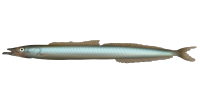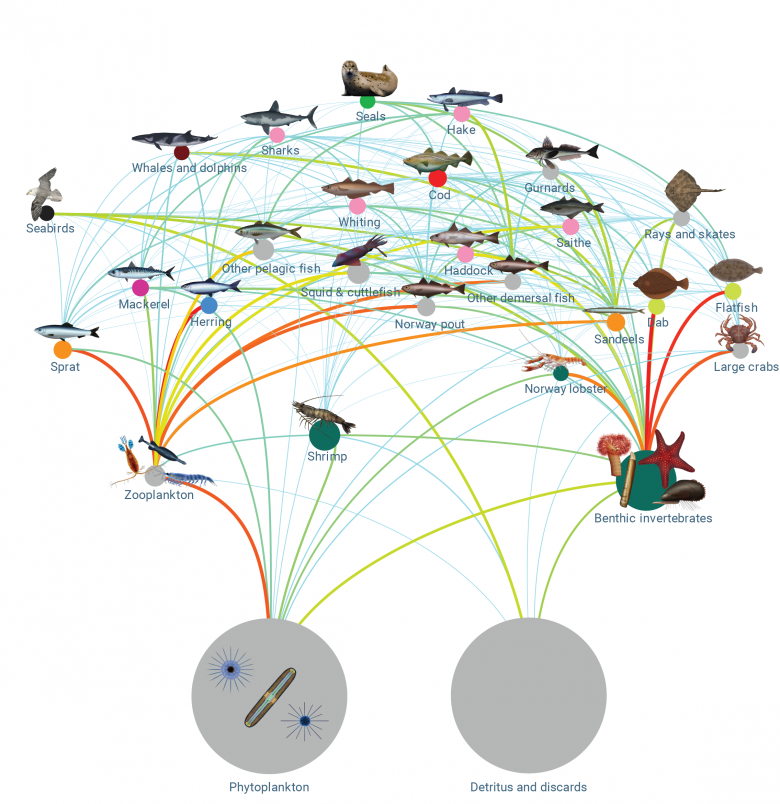 | |
| Layer Info | |
|---|---|
| Category | Fish |
| Editable | No |
| Data source | Ecosystem simulation |
| Values | |
| Extremely Low | |
| Low | |
| Medium | |
| High | |
| Extra High | |
| Extreme | |
Description:
Sandeels
Habitat: Demersal
Main role: Prey
Trophic level: 3 – 3,5
Diet: Their diet is dominated by zooplankton, but polychaetes, meiofauna and other small benthos have also an important role.
Threats: Of commercial interest. They are caught in large quantities by specialized industrial fisheries.
European sprat
Habitat: Pelagic
Main role: Prey
Trophic level: 3
Diet: zooplankton.
Threats: Highly commercial. Sprats are caught by various trawl gear and seine nets, and are often preserved by smoking. Juvenile sprats are marketed as whitebait. However, the larger part of the international catch is used in the fishmeal industry.
MSP Challenge 2050:
Sandeel and sprat are part of one single data layer. This is a month-by-month, computer generated data layer following calculations made by the ecosystem simulation (EwE).
Different pressures generate by human activities (noise, bottom disturbance, surface disturbance, artificial substrate) have different, complex effects on marine species in terms of movement, survival and procreation.
Sandeel and sprat are caught by all fishing fleets, but mostly by industrial and pelagic trawl.
In different languages
Sandeel
- SN: ammodytes
- EN: sandeels
- NL: zandspiering
- GE: Sandaal
- DK: tobis
- FR: lançon
- NO: småsil
- SE: tobis
Sandeels are part of a group of bottom-dwelling fish species without swim bladders that prefer relatively smooth bottom or gravelly sand. They typically burrow in the sand to escape predation. They are important prey for many predators of the food web.
European sprat
- SN: sprattus sprattus
- EN: European sprat
- NL: sprot
- GE: Europäische Sprotte
- DK: brisling
- FR: sprat
- NO: brisling
- SE: skarpsill
ON THIS TAB VISUAL CONTENT IS PLACED
Retrieved from:
N/A
Description:
N/A

 Co-funded by the European Union.
Co-funded by the European Union.